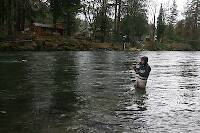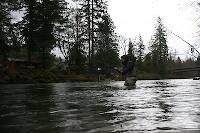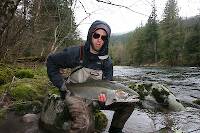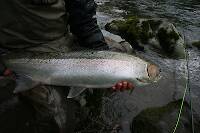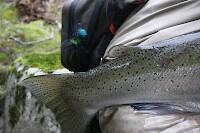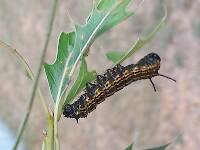
Hex Mayflies
Hexagenia limbata
The famous nocturnal Hex hatch of the Midwest (and a few other lucky locations) stirs to the surface mythically large brown trout that only touch streamers for the rest of the year.
Featured on the forum

This seems to be a young larva of Limnephilus. Although not clear in the picture, several ventral abdominal segments have chloride epithelia.

Troutnut is a project started in 2003 by salmonid ecologist Jason "Troutnut" Neuswanger to help anglers and
fly tyers unabashedly embrace the entomological side of the sport. Learn more about Troutnut or
support the project for an enhanced experience here.
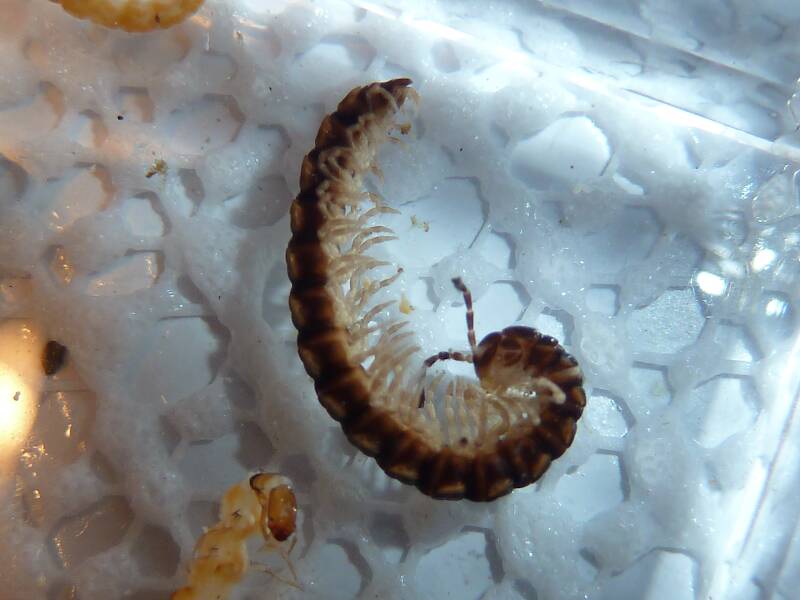
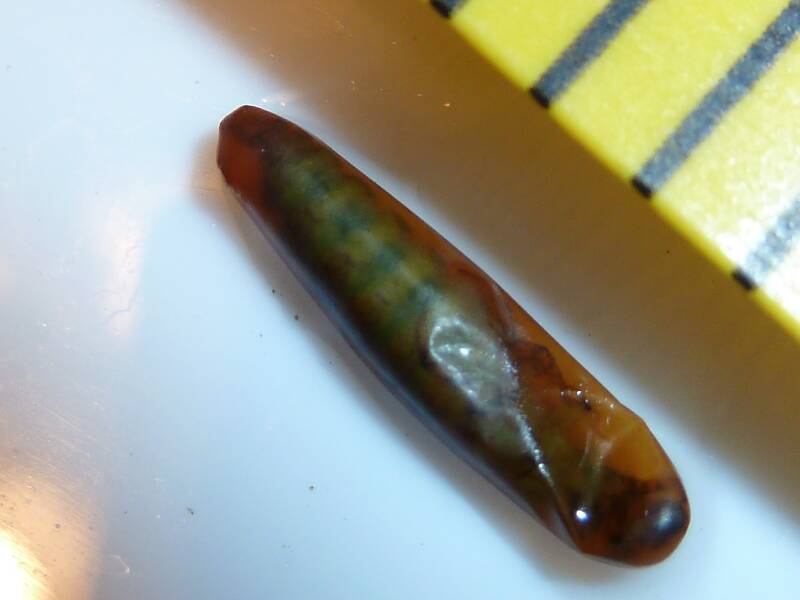
FISHN50 on Aug 24, 2011August 24th, 2011, 12:38 pm EDT
Please Id these. I'm doing my first ever (for me) stream study & have never ran into these before
Entoman on Aug 24, 2011August 24th, 2011, 4:23 pm EDT
Hi fishn50,
Did you get the first one from the water? The bottom one is a pupating caddis larvae. Probably a rhyacophilid from the looks of it.
Regards,
Kurt
Did you get the first one from the water? The bottom one is a pupating caddis larvae. Probably a rhyacophilid from the looks of it.
Regards,
Kurt
"It's not that I find fishing so important, it's just that I find all other endeavors of Man equally unimportant... And not nearly as much fun!" Robert Traver, Anatomy of a Fisherman
FISHN50 on Aug 24, 2011August 24th, 2011, 5:04 pm EDT
Hi Entoman
Thanks for the quick reply. The first one also came out of the water. It was collected in the D net. like I said I never ran into either one of those before. I assumed the second one was a "green Rockworm" pupa case because we picked up quite a few larva,. The first one is one of 4 we picked up in the sampling
Thank's
Neil
Thanks for the quick reply. The first one also came out of the water. It was collected in the D net. like I said I never ran into either one of those before. I assumed the second one was a "green Rockworm" pupa case because we picked up quite a few larva,. The first one is one of 4 we picked up in the sampling
Thank's
Neil
Taxon on Aug 24, 2011August 24th, 2011, 10:59 pm EDT
Neil-
I believe your 1st photo is of a millipede. They are sightless, and are apparently not particularly deterred by a stream which intersects their path. Some may also be semi-aquatic.
I believe your 1st photo is of a millipede. They are sightless, and are apparently not particularly deterred by a stream which intersects their path. Some may also be semi-aquatic.
Entoman on Aug 24, 2011August 24th, 2011, 11:49 pm EDT
Your welcome.
As to the two critters in the top photo - The big multi-legged one looks like some sort of millipede or centipede to me. I'm not up on many of the land based invertebrates and can't tell you what it is or really offer in explanation as to how it got into the water other than bad luck.:)
The little guy in the lower left though I think I can help with. It looks to be a member of the Philopotamidae family of finger net spinning caddisflys. Its long ovoid head makes me think Dolophilodes distincta or Winter Caddis. Despite its name this species can have summer emergences, but this particular specimen looks to be a part of the group that emerges from November to as late as February. A curious thing about them is the winter brood females have dwarfed wings and don't fly.
Enlarging the photo shows a dark area it the anterior margin that could be the prominent notch indicative of the Chimarra genus (another philopotamid), but the heads of Chimarra are usually less ovoid and thicker. They are also often noticeably shorter from the eyes to the posterior margin and as wide or wider than the pronotum at their joining.
Regards,
Kurt
As to the two critters in the top photo - The big multi-legged one looks like some sort of millipede or centipede to me. I'm not up on many of the land based invertebrates and can't tell you what it is or really offer in explanation as to how it got into the water other than bad luck.:)
The little guy in the lower left though I think I can help with. It looks to be a member of the Philopotamidae family of finger net spinning caddisflys. Its long ovoid head makes me think Dolophilodes distincta or Winter Caddis. Despite its name this species can have summer emergences, but this particular specimen looks to be a part of the group that emerges from November to as late as February. A curious thing about them is the winter brood females have dwarfed wings and don't fly.
Enlarging the photo shows a dark area it the anterior margin that could be the prominent notch indicative of the Chimarra genus (another philopotamid), but the heads of Chimarra are usually less ovoid and thicker. They are also often noticeably shorter from the eyes to the posterior margin and as wide or wider than the pronotum at their joining.
Regards,
Kurt
"It's not that I find fishing so important, it's just that I find all other endeavors of Man equally unimportant... And not nearly as much fun!" Robert Traver, Anatomy of a Fisherman
Oldredbarn on Aug 25, 2011August 25th, 2011, 6:45 am EDT
They are sightless, and are apparently not particularly deterred by a stream which intersects their path. Some may also be semi-aquatic.
I like this Roger..."Some may also be semi-aquatic"...Yeah...Like after they fall in...;)
I think we have been near here before in another thread. There may be aquatic centi-millipede's or they may be able to survive the crossing of streams...Otherwise they would have to go around them and would of lived quite an isolated life...;)
My sugesstion is to ignore it from a fishing standpoint or tie yourself up some long-as-hell-shanked Whooly Worms...Here's a small puzzle: Is it Wooly Worm or Whooly Worm or Whooley Worm and why?
Spence
"Even when my best efforts fail it's a satisfying challenge, and that, after all, is the essence of fly fishing." -Chauncy Lively
"Envy not the man who lives beside the river, but the man the river flows through." Joseph T Heywood
"Envy not the man who lives beside the river, but the man the river flows through." Joseph T Heywood
Quick Reply
Related Discussions
Topic
Replies
Last Reply
5
Mar 29, 2013
by Entoman
by Entoman
6
Mar 12, 2015
by Feathers5
by Feathers5






